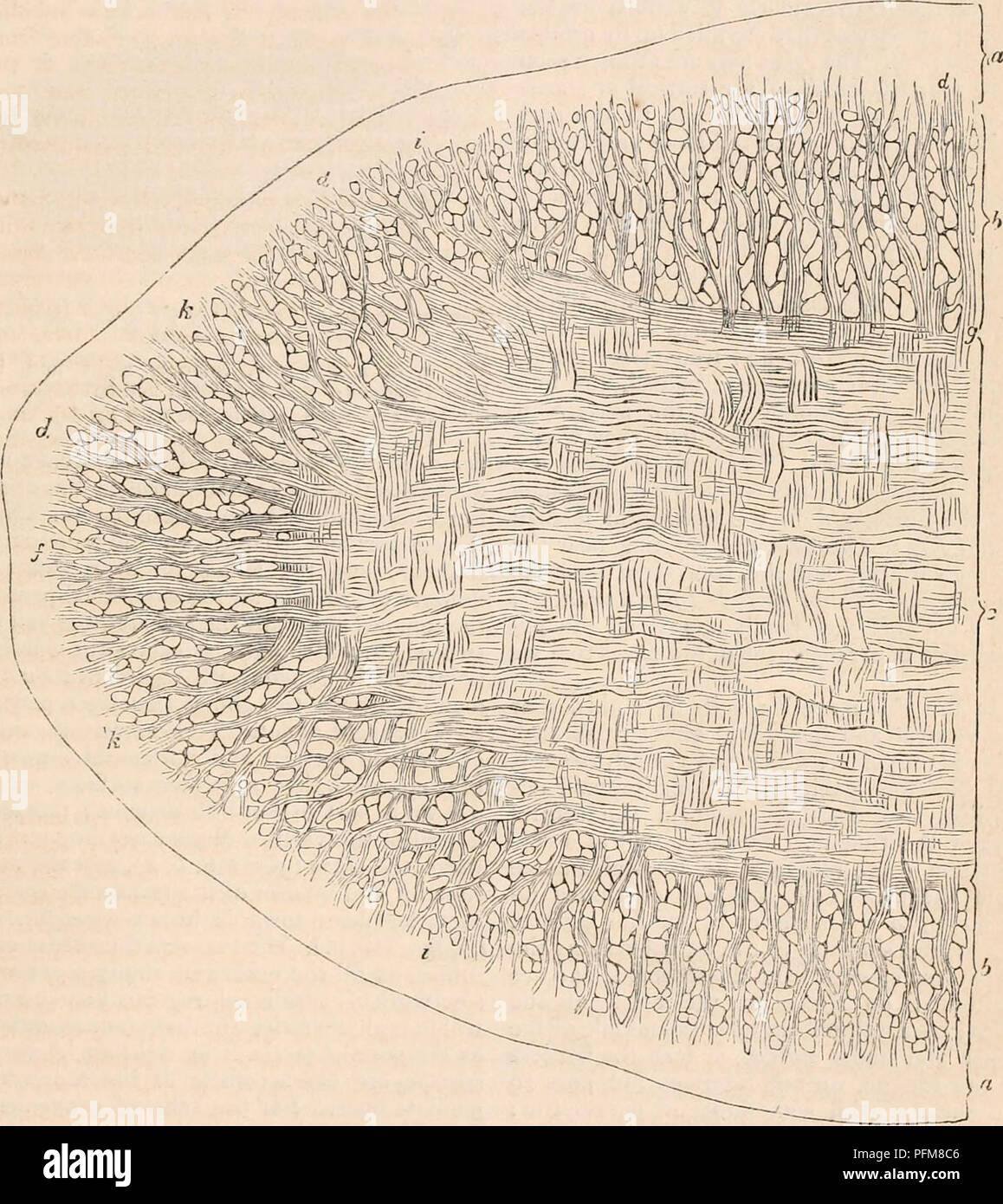. The cyclopædia of anatomy and physiology. Anatomy; Physiology; Zoology. TONGUE. 1127 and inferior must be to some extent arbitrary : however, most of those on the upper surface are intrinsic in their origin, those at the sides are extrinsic in their origin, while those on the inferior surface are sufficiently individual and distinct: some subdivision appears ne- cessaiy, and the one adopted will at any rate assist in remembering these facts. The microscopical examination of linn sections, On making a thin transverse vertical section of the human tongue, and examining it with the microscope*,

Image details
Contributor:
Central Historic Books / Alamy Stock PhotoImage ID:
PFM8C6File size:
7.1 MB (502.6 KB Compressed download)Releases:
Model - no | Property - noDo I need a release?Dimensions:
1492 x 1674 px | 25.3 x 28.3 cm | 9.9 x 11.2 inches | 150dpiMore information:
This image is a public domain image, which means either that copyright has expired in the image or the copyright holder has waived their copyright. Alamy charges you a fee for access to the high resolution copy of the image.
This image could have imperfections as it’s either historical or reportage.
. The cyclopædia of anatomy and physiology. Anatomy; Physiology; Zoology. TONGUE. 1127 and inferior must be to some extent arbitrary : however, most of those on the upper surface are intrinsic in their origin, those at the sides are extrinsic in their origin, while those on the inferior surface are sufficiently individual and distinct: some subdivision appears ne- cessaiy, and the one adopted will at any rate assist in remembering these facts. The microscopical examination of linn sections, On making a thin transverse vertical section of the human tongue, and examining it with the microscope*, we see that the appearances indicated by a similar section, viewed with the naked eye, are correct, namely, that the in- trinsic muscular fibres assume three principal directions, a vertical, a transverse, and a lon- gitudinal ; and that the longitudinal are con- fined to the neighbourhood of the surface. But we see more; we see a very curious and artificial arrangement of the fibres very much contributing to facilitate their package, and by which they mutually support one another Fig. 74-8.. Transverse vertical section of the left half of the human tonrpie at the most posterior part of the free portion. (Magnified 10 diameters.) a, a, cutis; b, b, cortical portion, consisting of the three orders of fibres; c, central portion, con- sisting only of two; d, discs of longitudinal fibres, seen in section; /, horizontal median plane; g, line of emergence of the vertical from the transverse fibres; i, i', the most superior and inferior of the transverse curving up and down; k, It, the most lateral of the vertical curving outwards. * The best method to adopt in making these the sections with some very thin flat knife. Place investigations is to keep a fresh human tongue two the sections on a glass slide with a drop or two of or three days in spirit, and then boil it about an water, cover them with a piece of thin glass, and hour. On being first put into the boiling water it view the